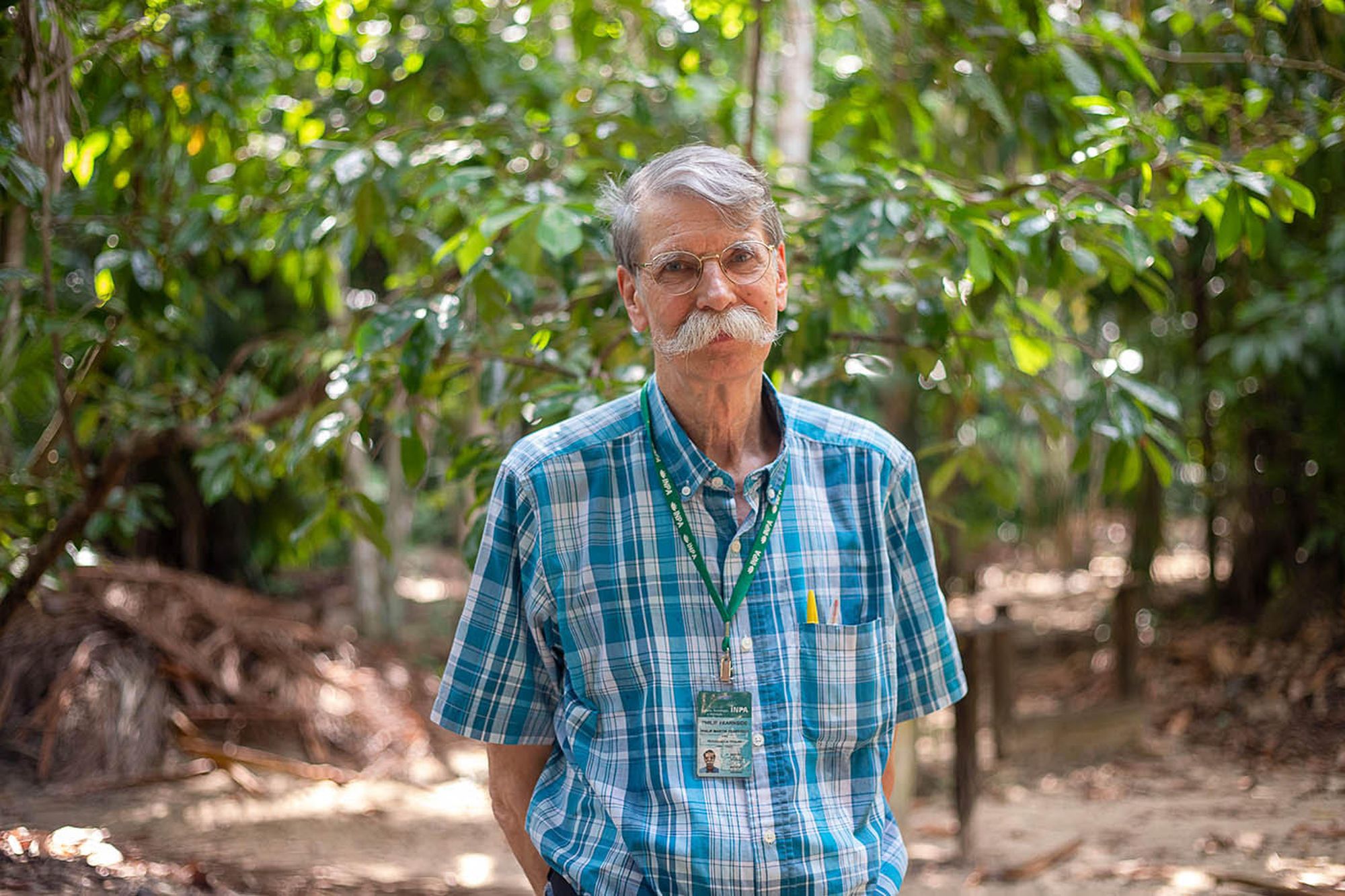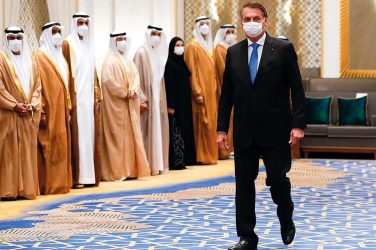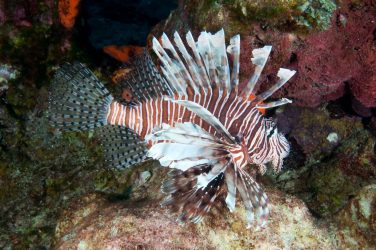Amazon and climate scientists agree: The largest rainforest area in the world is on the brink of collapse. And they call for immediate action to prevent it and its global consequences.
With that background, Brazilian President Luiz Inácio Lula da Silva has invited the heads of government from all countries in the Amazon region to the “Amazon Summit” on August 8th and 9th in Belém, the capital of the state of Pará.
“What we want is to tell the world what we’re going to do with our forest and what the world needs to do to help us, because they promised US$ 100 billion in 2009 and until today that US$ 100 billion has not come out“, he said ahead of the summit in an interview of the state channel Canal Gov.
Fourteen questions from environmental journalist Norbert Suchanek to renowned scientist Philip Martin Fearnside from the National Institute for Research in Amazonia (INPA) in Manaus.
How far away or how close are we to the “point of no return” of the Amazonian ecosystem and its rainforests? How close are we to the collapse of the Amazon?
Philip M. Fearnside: In heavily deforested areas in southern Pará and northern Mato Grosso the “point of no return” may already have been passed, but this is not to say that anyone should “throw in the towel” on protecting the forest there. Acre is another area that is near or passed a tipping point and is the area most dependent on the effect of lost water recycling in the remainder of Brazilian Amazonia.
A critical question is what will happen north of Acre in the Trans-Purus region of Amazonas state. If the forest in this region is lost it would be catastrophic for Brazil, since this area is crucial for recycling the water that is transported to São Paulo and other parts of southeastern Brazil via the winds known as “flying rivers.”
Opening this “Trans-Purus” region to the entry of deforesters via roads planned to branch off Highway BR-319 places this area in danger, making the question of licensing the “reconstruction” of BR-319 the most critical issue at the moment.
In his proposed Amazon protection program (PPCDAm) President Lula da Silva wants to end illegal deforestation in the Brazilian Amazon by 2030. Does this mean that legal deforestation will continue?
Philip M. Fearnside: Your rephrasing of Lula’s promise in his famous speech at the COP in Egypt is undoubtedly a better reflection of real plans than what he said there, which did not include the critical word “illegal”. Yes, legal deforestation would not only continue but would increase substantially, since Lula also promises “regularization” of land-tenure claims.
“Regularization” is a euphemism for legalizing illegal land claims and carries the connotation that the claimants really have legitimate rights to the land they claim, but lack documentation due to government inefficiency. However, the vast majority of the area that is being legalized is through claims made in the Rural Environmental Register (CAR), which was created in 2012 by the present “forest code” and allows areas to be registered online with no on-site inspection.
Despite theoretically not being valid for claiming land tenure, this has been what happens in practice, and the CAR has become the major tool for land grabbers (grileiros) to obtain title to “undesignated” government land. Lula has recently announced that he wants to have a “shelf” (prateleira) of land to be distributed to claimants, including the “undesignated” government land.
Once tenure to these areas legalized, the deforestation both past and future would be legalized. Of course, legalizing these areas also fuels future land claims and invasions, since the availability of free land is strong motivator, and the continued cycle of “amnesties” forgiving past land invasions and environmental crimes has no end until the last tree is cut.
And is this “zero deforestation target” by 2030 enough to save Amazonia?
Philip M. Fearnside: If deforestation were stopped by 2030, including “legal” deforestation, it would be a major advance. However, there are also other threats. Forest fires are favored by climate change and by logging and by initial “sparks” provided by the burning in cattle pastures in already-deforested areas.
What are your criticisms on the Amazon protection program (PPCDAm), which at the same time also aims the expansion of “sustainable” logging up to 5 million hectares of its undesignated public lands (terras públicas não destinadas)?
Philip M. Fearnside: The government’s efforts to control deforestation through law enforcement with inspections under the PPCDAm program are not a subject of criticism. This needs to be done, and the Ministry of the Environment is working hard to do it.
However, other types of actions are necessary, especially forgoing infrastructure projects like Highway BR-319 that imply tremendous amounts of deforestation and halting the legalization of land claims by all but the traditional riverside dwellers who have been living for generations on government land without documentation, but who represent an insignificant part of the area being legalized today.
As for “sustainable” logging, this is fiction. Essentially all logging in Amazonia today is unsustainable, including logging in legally authorized “sustainable forest management plans.” None of these plans take into account the fact that timber extraction makes the forest much more vulnerable to the entry of fire, and if a logged area burns the fire intensity and biomass loss are greater.
This initiates a vicious cycle that results in repeated fires and ends with complete elimination of the forest. In addition, forest management is not sustainable in practice due to contradictions in economic logic (the forest recovers more slowly than the rate at which money can be made by destroying it and investing the proceeds elsewhere), and by legal loopholes that allow legally cutting the forest in the first few years of a management cycle, supposedly to be followed by the landholder waiting for decades with no income while the logged forest recovers before the next cycle.
What shall the Government do with its undesignated public lands of more than 54 million hectares in the Amazon region?
Philip M. Fearnside: These areas should all be converted to “conservation units” (protected areas for biodiversity) or to Indigenous lands in areas where these peoples are present. The conservation units should include those in the “sustainable use” category, such as extractive reserves and sustainable development reserves. None of this land should be legalized as private properties.
The Lula governments in the past were responsible for huge hydroelectric projects such as the two large dams on the Rio Madeira and Belo Monte on the Rio Xingu in Amazonia. Do your fear that further large hydroelectric power plants will be decided or built in Amazonia under the new Lula government?
Philip M. Fearnside: This is a major fear due not only to Lula’s past history but also to his statements during his election campaign defending these past decisions. The plans of the government’s electrical authorities as expressed in the ten-year plans and in the 2050 Energy Expansion Plan are also worrying.
These plans make clear that the authorities would build many more dams in Amazonia if the PL191/2000 bill is passed by the National Congress, opening Indigenous areas to dams (as well as mining, agribusiness and logging). The interest groups behind this proposed law have sufficient votes to pass the law and to override any presidential veto, and the bill continues to proceed though the committees towards a plenary vote.
How do you rate the existing hydroelectric power plants in Amazonia. What contribution do they make to climate protection? Or do they rather heat up the global climate? And if so, are the greenhouse gas emissions from the large reservoirs of the hydroelectric power plants included in the Brazilian contribution to the global greenhouse gas emissions?
Philip M. Fearnside: The existing hydroelectric dams make a contribution to global warming in various ways. They emit both carbon dioxide and methane, and these emission are far greater in the first few years after a reservoir is filled, making them especially damaging for global warming, which must be contained within the next few years to avoid the catastrophic consequences of crossing climatic tipping points.
In addition, methane is a gas with a large warming impact in the first few years, in contrast to CO2, which has a relatively mild impact per ton each year but that has its impact spread out over more than a century. What counts for avoiding tipping points is what happens in the next 20 years, and the most recent IPCC report calculates that the impact of a ton of methane over the first 20 years is 80.5 times greater than that of a ton of CO2.
This essentially quadruples the impact of the methane from Amazonian dams as compared to the value of 21 for this conversion used in the Kyoto Protocol and in most of the literature on dam emissions (including my own), or the values of 23, 25 and 28 used in different IPCC reports.
Another way that dams contribute to global warming is by carbon credit having been granted to four of the large dams in Brazilian Amazonia, allowing emissions in the countries that bought the credit. None of these dams are truly “additional” in the sprit of the Kyoto Protocol, meaning that they would only have been built because of the subsidy from the carbon credit.
You, as climate and Amazon scientist, see the paving of the BR-319 as one of the greatest threats to the Amazon region. Do you see any signs that Lula and his government will complete or abandon the highway project?
Philip M. Fearnside: In a radio interview in Manaus during his election campaign, Lula stated that he didn’t see why BR-319 shouldn’t be approved so long as the state and municipal governments have a commitment to “preservation.” Unfortunately, this would not contain the damage from the highway even if such a commitment existed.
The impact extends far beyond the municipalities along the BR-319 itself, and there is no sign of willingness to pay the astronomical cost of containing deforestation in the area as a whole. In addition, politicians change with every election and there is no way of guaranteeing the supposed “commitment” to preservation over decades in the future.
How do you assess the existing and planned oil and gas exploitation projects in the Amazon states? Should oil production in the rainforest areas be continued, expanded or stopped – for climate protection reasons alone?
Philip M. Fearnside: Globally oil and gas must be phased out quickly to contain climate change. Even the International Energy Agency (IEA), which is not an environmental organization to say the least, has issued a report stating that no new oil and gas fields should be initiated and that the existing ones must be gradually reduced to zero, with zero net emissions globally by 2050.
Brazil should follow this path, and in the Amazon it should be faster than elsewhere because of the environmental damage other than climate change that results when spills or collateral road building and deforestation occur in Amazon forest.
About the oil and gas project in the Solimões Sedimentary Area. Rosneft, the Russian state oil and gas company, has bought drilling rights to 16 blocks in that vast area of intact rainforest in the western part of Brazil’s Amazon region. When can and will the Russian company start the gas and oil exploitation? Or will the Lula government stop the project?
Philip M. Fearnside: No timeline has been announced, and neither has any decision to forgo the project been announced. Given Putin’s close connection to Rosneft, Lula’s tilt towards Putin on the war in Ukraine is worrisome. The BR-319 and associated AM-366 highway would be very important to Rosneft.
What would be the consequences for rainforest and indigenous peoples in the region if the oil and gas project will be implemented?
Philip M. Fearnside: The AM-366 would pass through three of the first oil blocks, as well as a large area of potential future blocks. If that road is built, land-grabbers, squatters and others would be attracted to the undesignated public lands it crosses, and all of the eastern half of the proposed road network has already been claimed in the CAR. The oil and gas project could be a key fact in hastening the construction of these roads, as both Rosneft’s money and Putin’s influence could make it a federal and state government priority.
How do you see the risk of the production of “sustainable” biofuels based on the cultivation of sugar cane or African oil palms – or soy and corn – in the Amazon?
Philip M. Fearnside: These are a significant worry, especially in the case of oil palm in the Trans-Purus area. This area is climatically the best suited for oil palm, and Malaysian oil palm companies even tried to buy areas there in 2008, but have backed off in favor of investments in other countries for now.
What do you wish as a result of the Belém conference?
Philip M. Fearnside: One would hope that Brazil and the other Amazonian countries will make commitments to forego projects like BR-319 that have tremendous implications for climate change, as well as for biodiversity and indigenous peoples.
What should be decided by the leaders of the Amazon countries in Belém? What are your hopes for the Amazon and Brazil?
Philip M. Fearnside: These countries need to do more than urge the rest of the world to contribute financially to each country’s efforts to contain deforestation. The leaders need to make commitments that are politically difficult, such as foregoing infrastructure, ceasing to legalize invasions of government land, etc.
Philip M. Fearnside: Brazil must wake up to the importance of the Amazon forest and take the difficult political decisions needed to maintain it. This requires much more than passing the problem to the Ministry of Environment. Of particular concern is the Trans-Purus area and the plans that threaten it.
Philip Martin Fearnside is an American biologist at the National Institute for Research in Amazonia (INPA) in Manaus, Brazil, since 1978. He holds a Ph.D. in Biological Sciences from the University of Michigan with over 700 publications and membership in the Brazilian Academy of Sciences. He was identified in 2006 as the world’s second most-cited scientist on global warming, in 2011 as the 7th most cited on sustainable development, and in 2021 as “most influential” in Brazil on climate change. Fearnside is also member of the Science Panel for the Amazon (www.theamazonwewant.org).
Norbert Suchanek is a German journalist and author specializing in environmental science coverage since 1988 and is based in Rio de Janeiro.
Email: norbert.suchanek@online.de






